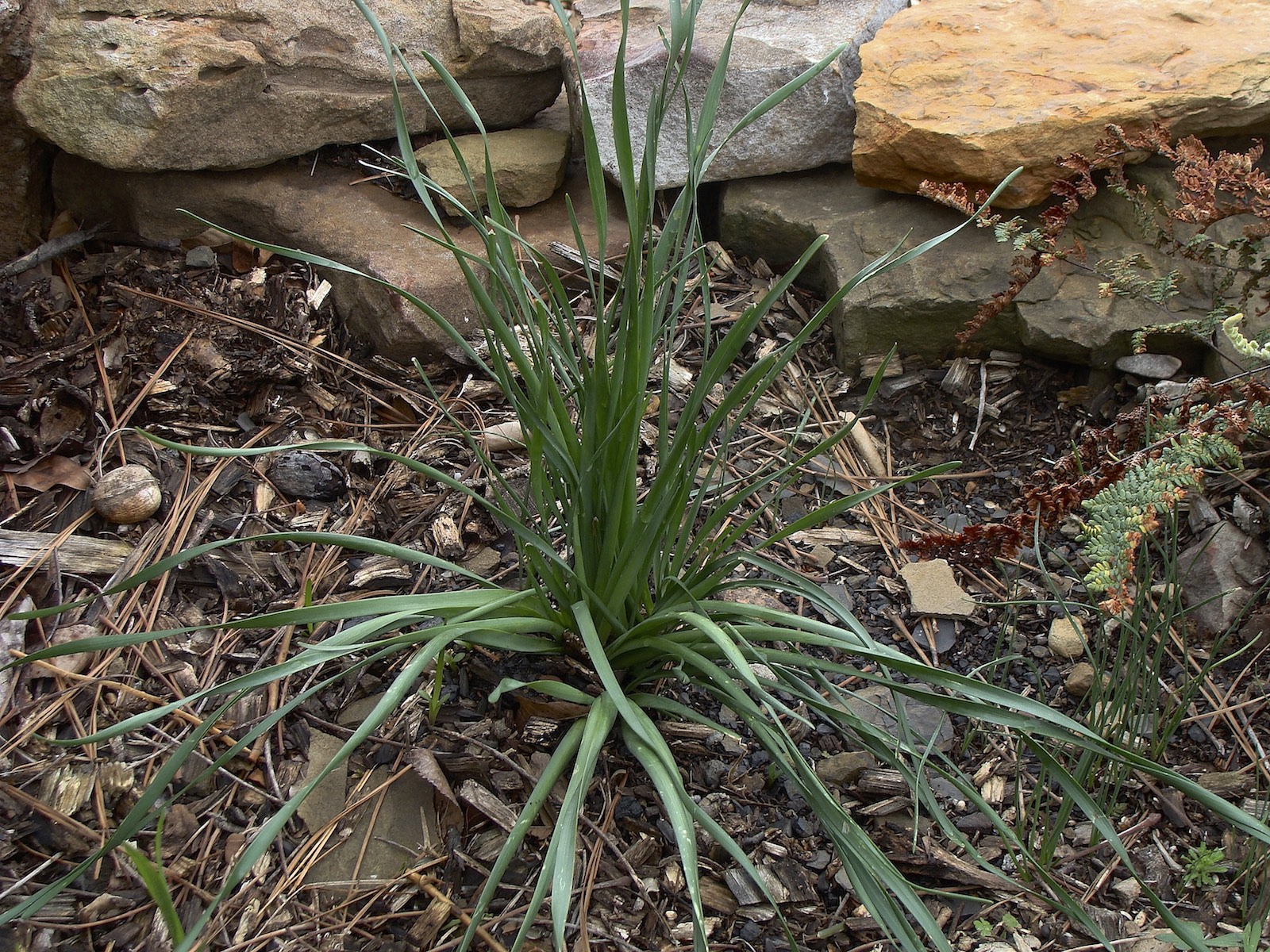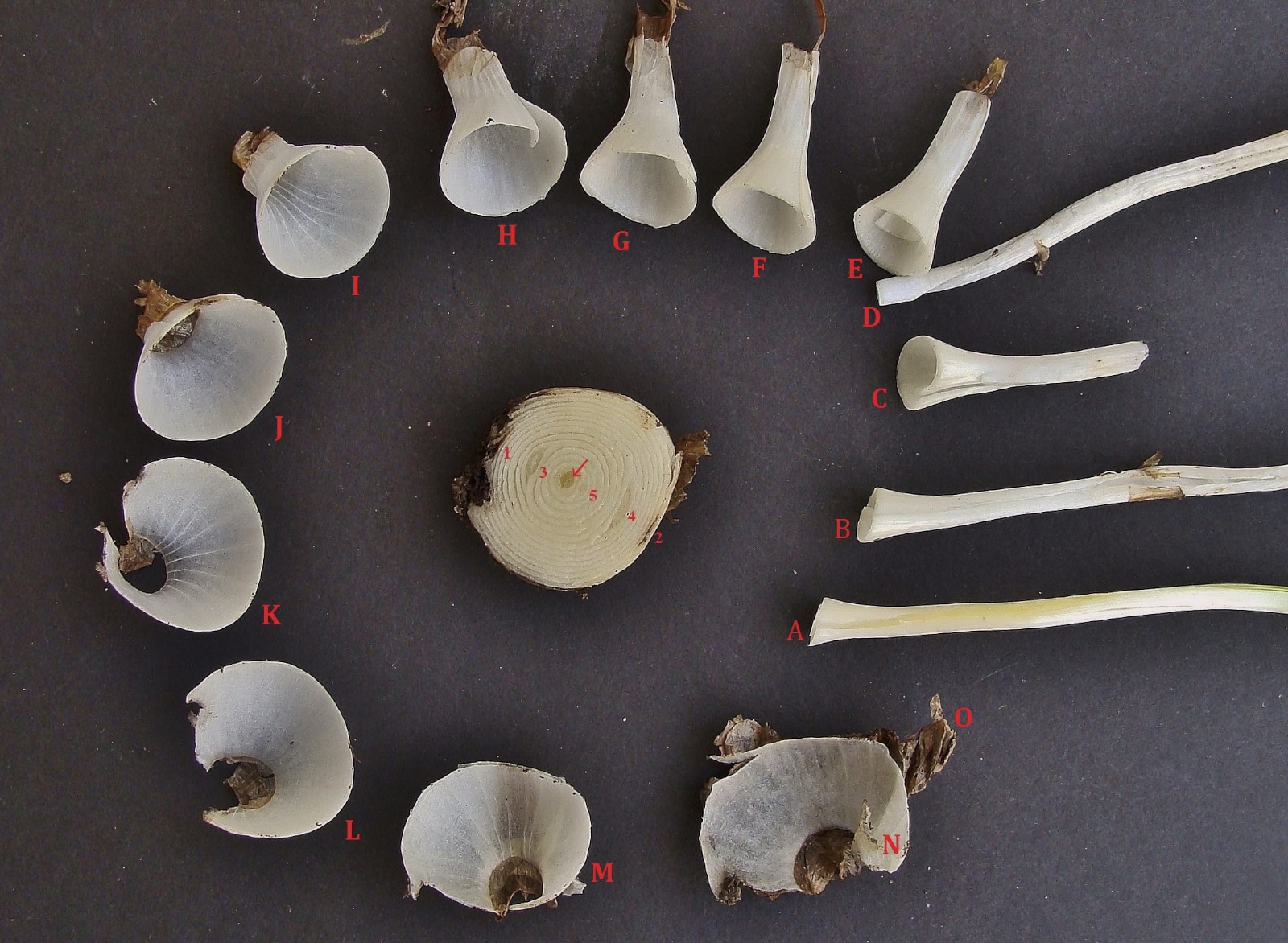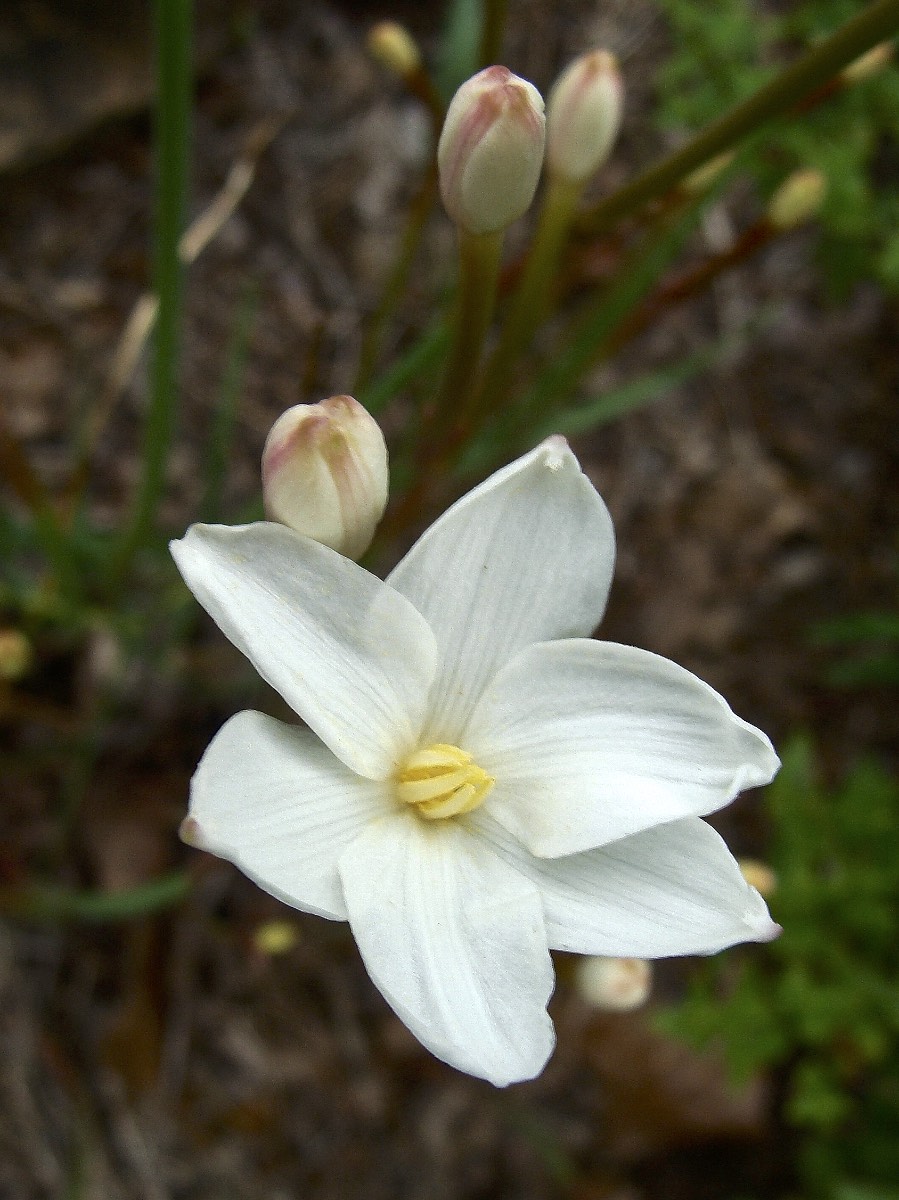Wild geranium (Geranium maculatum) of the Geranium (Geraniaceae) family is an herbaceous woodland perennial that blooms in early spring. In the U.S., this species is found from Louisiana and Oklahoma to Florida and north to North Dakota and Maine. In Arkansas, it is found primarily in the highlands of the northwestern half of the state. The genus name is based on a Greek word meaning “crane” in reference to the shape of the plant’s fruit which resembles a crane’s bill. The specific epithet means “spotted” in reference to leaf spots that may or may not be present. Other common names include spotted geranium, spotted crane’s-bill and wood geranium. Preferred habitats are wind-protected, lightly shaded, mesic deciduous woodlands and borders with various well-drained soils, but it may be found in sunny sites with consistent moisture. Plants may wilt on hot, windy spring days and may enter early dormancy if drier conditions persist.
Wild geranium, a long-lived plant, has stout, dark-colored, round, shallow, rough rhizomes with a light orange interior. Nubs develop along the sides of rhizomes that may grow into rhizome branches. Fibrous roots grow from the lower sides of rhizomes. Leaf and stem growth originates at the tips of rhizomes. With mature plants having many growth tips on relatively short rhizome segments, a mature plant develops a rounded mound of leaves. A plant may have a spread of 2 feet or more and reach a height of 1½ feet tall.
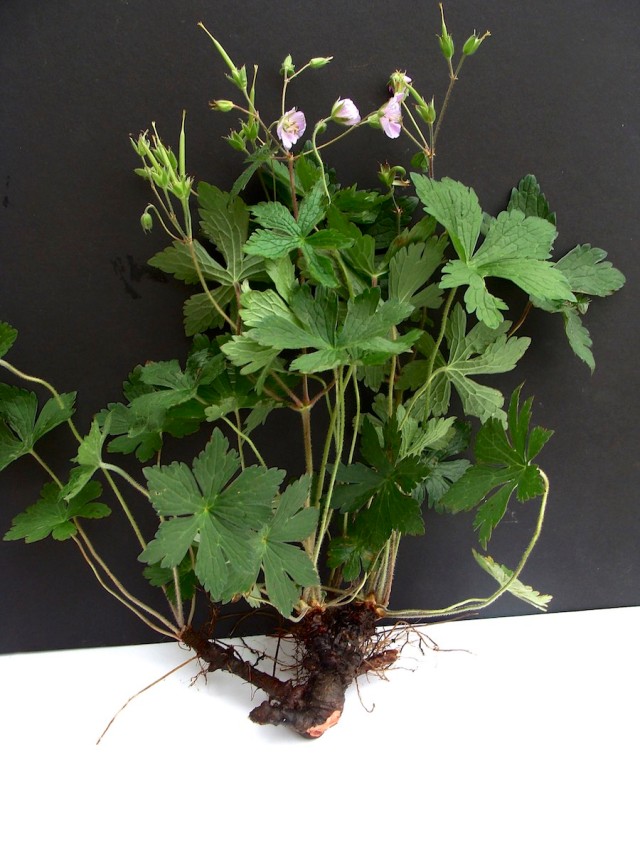 Photo 1: A partial rhizome and plant (detached from main rootstock at light orange area). This rhizome segment has several branches, including a small branch on the right side.
Photo 1: A partial rhizome and plant (detached from main rootstock at light orange area). This rhizome segment has several branches, including a small branch on the right side.
The first leaves to appear in spring are basal leaves. The largest basal leaves, on the periphery of the leaf mound, may be 6 or more inches wide with a petiole that is 7 or more inches long. Leaves, medium green on upper surface with a similar dull green lower surface, are finely pubescent on the upper surfaces as well as along the veins of lower surfaces. Basal leaves have a terminal lobe and two lateral lobes on each side, arranged in palmate fashion. The five lobes have wedge-shaped bases with wider mid-sections which gradually narrow in width to acutely rounded apices. Margins, which are entire near lobe bases, have short to long crenulations from mid-leaf to the leaf apex. The five lobes join together shortly above the petiole. The petiole is attached to the underside of the leaf blade at the leaf margin. Individual leaves and petioles are weak, but remain upright due to support from nearby leaves. The interior of the leaf mound is filled with smaller leaves. Basal leaves remain into late fall.
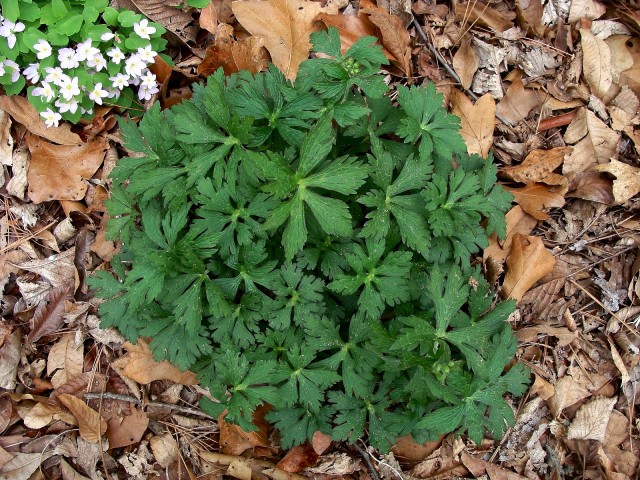 Photo 2: A relatively small young plant. Note wide uncleft area at center of leaves as well as flower buds making their appearance (see top center and lower right). White flowers in upper left are those of rue anemone (Thalictrum thalictroides).
Photo 2: A relatively small young plant. Note wide uncleft area at center of leaves as well as flower buds making their appearance (see top center and lower right). White flowers in upper left are those of rue anemone (Thalictrum thalictroides).
Shortly after the leaf mound has formed in late winter to early spring, clusters of football-shaped flower buds become visible across the leaf mound, as stout, unbranched and heavily pubescent floral stems rise above the basal leaves. Stems, five sided (more pronounced on larger stems) with downward-trending prominent pubescence and one or more pairs of cauline (stem) leaves, grow from rhizome tips surrounded by basal leaves. Stems continue to grow until buds are well above basal leaves and the lowermost pair of cauline (stem) leaves is positioned just above the basal leaf mound. As flowers reach anthesis, stems (with inflorescence) may have a total height of 16 inches with 10 of those inches below the lowermost cauline leaf pair. The lowermost pair of cauline leaves subtends two or three erect, light green to reddish secondary stems that may be 5 inches long. These secondary stems, in turn, support one to three peduncles (stalks of inflorescences) from which several pedicels (stalks of flowers) grow that are also subtended by leaf pairs. Leaves of the lowermost cauline leaf pair have the same appearance and size as basal leaves, but with petioles that are from ¾ inch to 4 inches long. Leaves that subtend pedicels have the same texture as other leaves, but appear three lobed at about 2 inches wide, with short petioles or perhaps sessile.
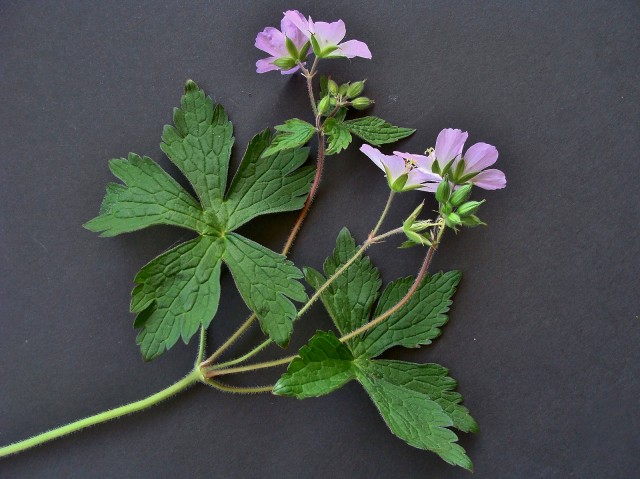 Photo 3: A single pair of cauline leaves subtends an upper secondary stem and two lower peduncles. Note the small leaves on the secondary stem and bracts at bases of stems, peduncles and pedicels.
Photo 3: A single pair of cauline leaves subtends an upper secondary stem and two lower peduncles. Note the small leaves on the secondary stem and bracts at bases of stems, peduncles and pedicels.
At anthesis in early spring, 1½-inch-diameter, upward-facing flowers are light pink to lavender with whitish centers. Flowers have five obovate overlapping petals and five light green pubescent, slightly ridged and elongate sepals. Sepals have acute apices that terminate in needle-like tips (cuspidate). Petals, with broadly rounded upper margins, surround ten stamens and a pistil. Stamens, connecting to the flower’s axis below a hairy ovary (superior ovary) of five carpels, have white slender filaments with elongate yellow anthers that bear yellow pollen. Pistils have a long slender whitish style that branches into stigmas, spread wide and curved backwards. Styles attach to the smooth, round-elongate, green sections of the ovary. Individual flowers, up to about ten to fifteen per stem in pairs or in loose clusters, are in bloom for one to two days. Total bloom time for a plant extends over about three weeks. Cauline leaves wither in late summer, well after seeds have dispersed.
 Photo 4: Flowers, changing from pink to lavender, have widely flared, overlapping, obovate petals.
Photo 4: Flowers, changing from pink to lavender, have widely flared, overlapping, obovate petals.
 Photo 5: Display showing flower buds (lower right), front and back of flowers and a flower past bloom (lower left). Note five-branched, back-curved stigmas.
Photo 5: Display showing flower buds (lower right), front and back of flowers and a flower past bloom (lower left). Note five-branched, back-curved stigmas.
After fertilization of a flower, the lower portion of the style quickly elongates and the five seeds–one in each ovary chamber–enlarge so that the ovary becomes knobby. The stigmas wither so that a crane’s-bill-like fruit is formed. The fruit, an inch or more long, matures and dries to a dull dark brown rigid capsule. Five dark brown oval seeds, resting just above the drying sepals, are tightly held in place, capped by the ovary wall, which bears five long thin arms (springs) aligned along the style and firmly attached just below the dried stigma. When the seed-bearing structure is dry, each cap and associated spring-loaded arm snaps upward. With this instantaneous snap, the seed is catapulted a number of feet away from the plant. Caps and arms, now curled backwards, remain attached at their upper end to a dried woody style.
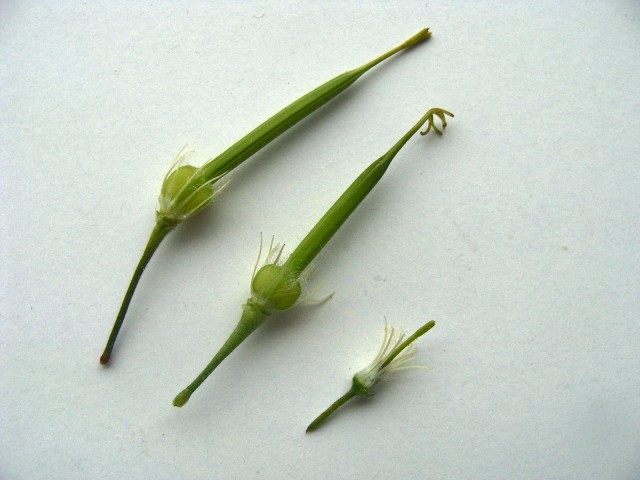 Photo 6: The flower at lower position in display (sepals and anthers removed) exhibits a prominent pistil prior to spreading of stigma. The two fruits (sepals removed) show the closing of the stigma (more mature fruit at top of display), strong growth of their “bills” and enlargement of ovules.
Photo 6: The flower at lower position in display (sepals and anthers removed) exhibits a prominent pistil prior to spreading of stigma. The two fruits (sepals removed) show the closing of the stigma (more mature fruit at top of display), strong growth of their “bills” and enlargement of ovules.
 Photo 7: In this display, the central stem bears a green immature fruit and a brown fruit that is poised to launch its five seeds. Seeds (examples on left) of the other two stems have been launched with caps and arms curled backwards.
Photo 7: In this display, the central stem bears a green immature fruit and a brown fruit that is poised to launch its five seeds. Seeds (examples on left) of the other two stems have been launched with caps and arms curled backwards.
For a partially sunny woodland garden, wild geranium is effective as a long-lived plant that is easy to cultivate. It has attractive form and foliage and showy flowers and fruit so that it is appropriate for specimen plants or as a groundcover. It is easily propagated by division.
The only other widely occurring native species of the genus found in Arkansas is Carolina crane’s-bill (Geranium carolinianum var. carolinianum). This is a small weedy annual/biennial species with small palmate leaves and purplish pink flowers. Another Arkansas native species known from only Miller County is Texas crane’s-bill (Geranium texanum). Four non-native species of the genus are also found in the state.
Article and photographs by ANPS member Sid Vogelpohl

 Photo 1: These multiple leaf rosettes are growing from a single caudex. Flowering stems are poised to grow as can be seem on the left side. Photo in late February.
Photo 1: These multiple leaf rosettes are growing from a single caudex. Flowering stems are poised to grow as can be seem on the left side. Photo in late February. Photo 2: A flowering stem with widely spaced pairs of leaves on its lower portion. First flowers to open are axillary flowers between two secondary stems, as shown. Note additional stems just appearing.
Photo 2: A flowering stem with widely spaced pairs of leaves on its lower portion. First flowers to open are axillary flowers between two secondary stems, as shown. Note additional stems just appearing.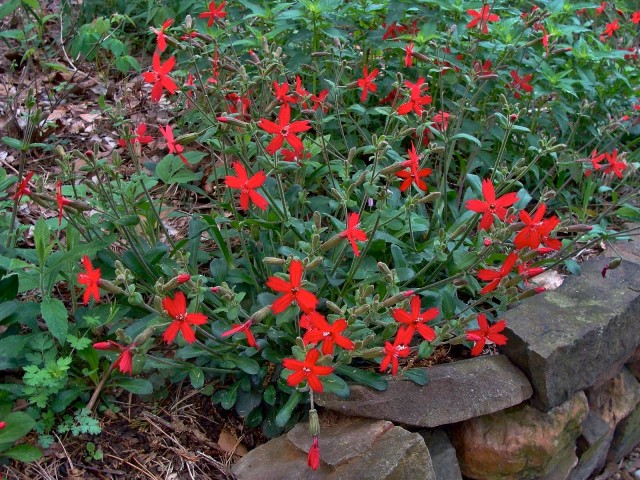 Photo 3: Even with a dozen main stems, the inflorescence is very open.
Photo 3: Even with a dozen main stems, the inflorescence is very open.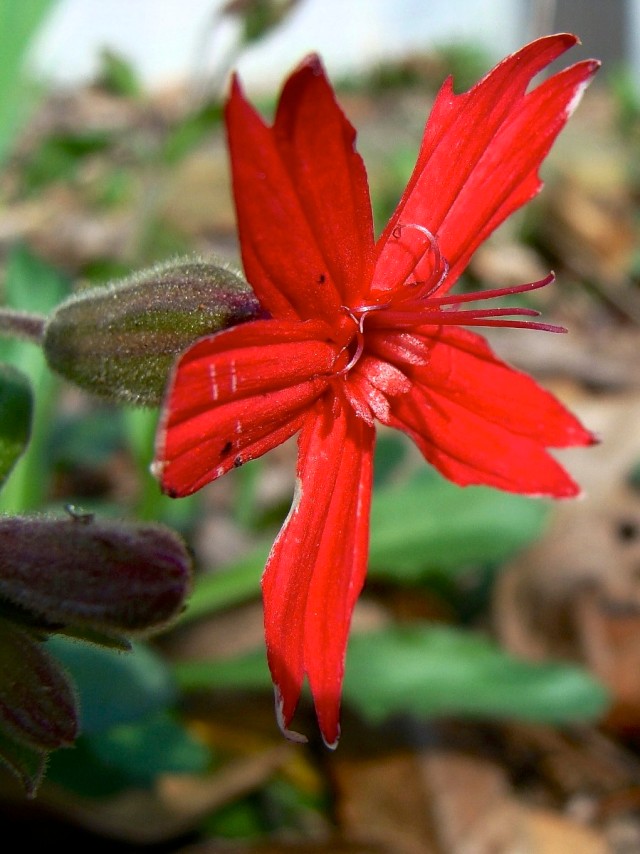 Photo 4: The corolla and corona are the same vibrant red. As shown, all ten stamens have emptied their anthers of pollen and twisted backwards as stigmas become receptive to receiving pollen from a different flower. Note the enlarged calyx behind the corolla.
Photo 4: The corolla and corona are the same vibrant red. As shown, all ten stamens have emptied their anthers of pollen and twisted backwards as stigmas become receptive to receiving pollen from a different flower. Note the enlarged calyx behind the corolla.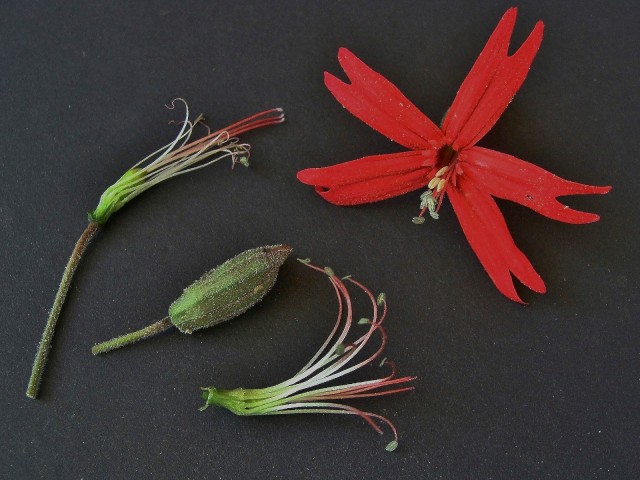 Photo 5: In the flower shown with petals, two sets of five anthers are exserted while styles have not yet appeared. The two flowers without petals show styles emerging with stamens in decline (lower center) and styles fully exerted with receptive stigmas, while stamens have wilted (upper left – note enlarging ovary). A ridged calyx (center) is also shown.
Photo 5: In the flower shown with petals, two sets of five anthers are exserted while styles have not yet appeared. The two flowers without petals show styles emerging with stamens in decline (lower center) and styles fully exerted with receptive stigmas, while stamens have wilted (upper left – note enlarging ovary). A ridged calyx (center) is also shown.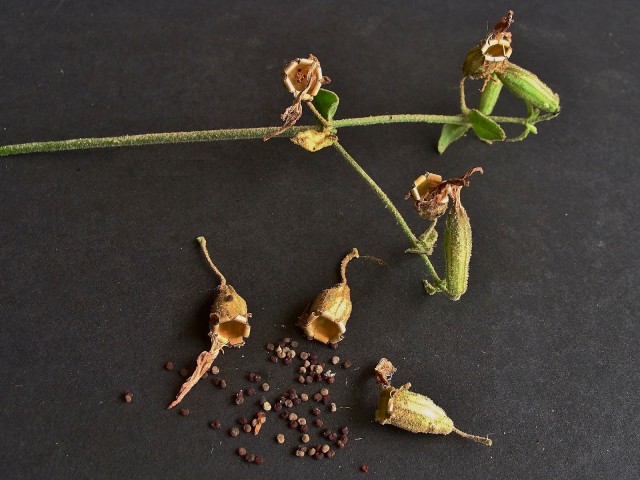 Photo 6: As calyxes dry, teeth roll back and seeds easily drop out.
Photo 6: As calyxes dry, teeth roll back and seeds easily drop out.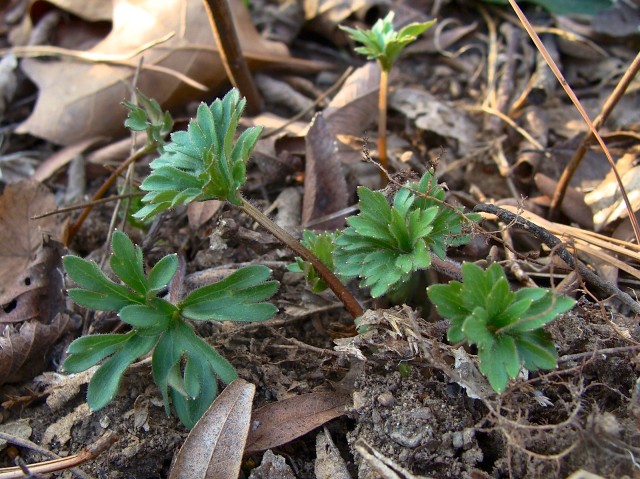 Photo 1: In mid-winter, basal leaves unfurl. Note pubescence of petioles and leaf blades.
Photo 1: In mid-winter, basal leaves unfurl. Note pubescence of petioles and leaf blades.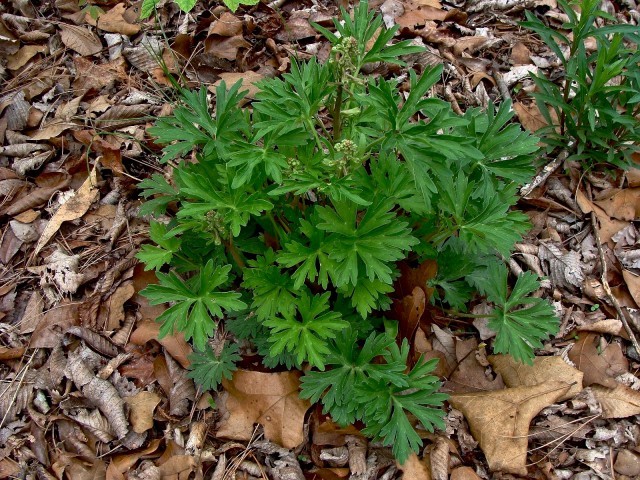 Photo 2: Appearance of trifoliate basal and cauline leaves are similar. Early pubescence is lost as the season progresses. Photo taken at end of March.
Photo 2: Appearance of trifoliate basal and cauline leaves are similar. Early pubescence is lost as the season progresses. Photo taken at end of March. Photo 3: Flower buds, as seen at left as well as in right foreground, suggest the shape of a dolphin, the source of the genus name Delphinium. Sepals and petals of this particular plant are all the same color. Stamens can be seen behind the two lower hairy petals.
Photo 3: Flower buds, as seen at left as well as in right foreground, suggest the shape of a dolphin, the source of the genus name Delphinium. Sepals and petals of this particular plant are all the same color. Stamens can be seen behind the two lower hairy petals.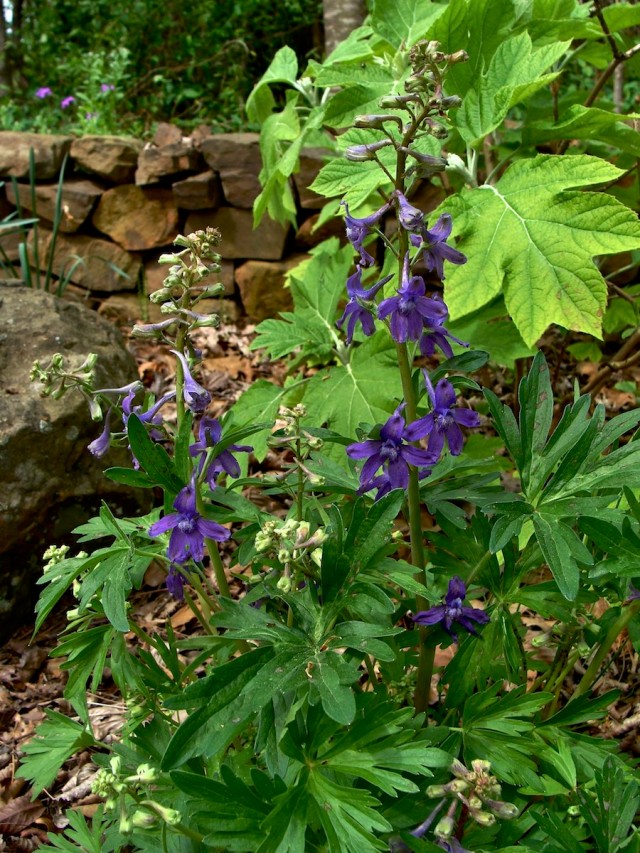 Photo 4: Trifoliate leaves have many elongate, broad lobes with rounded apices. Basal leaves remain vibrant throughout the growing season. Photo taken in early April.
Photo 4: Trifoliate leaves have many elongate, broad lobes with rounded apices. Basal leaves remain vibrant throughout the growing season. Photo taken in early April.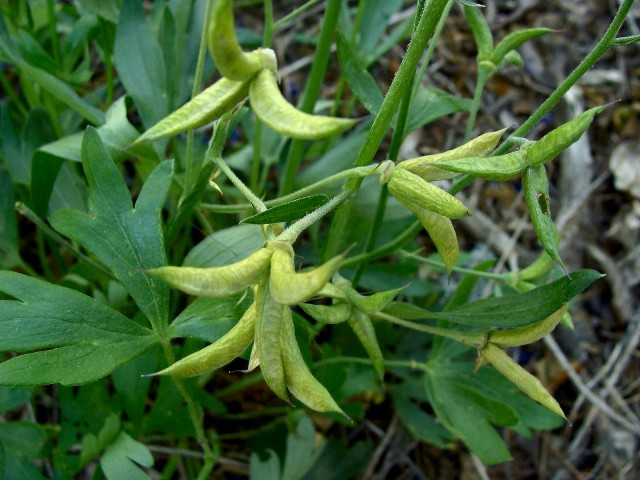 Photo 5: In early May, follicles are beginning to dry. Trifoliate upper leaves exhibit relatively little lobing.
Photo 5: In early May, follicles are beginning to dry. Trifoliate upper leaves exhibit relatively little lobing. Photo 1: This 4-inch seedling, in late January, would already have a long taproot. Seeds in inset were similarly planted outdoors, but had not yet sprouted.
Photo 1: This 4-inch seedling, in late January, would already have a long taproot. Seeds in inset were similarly planted outdoors, but had not yet sprouted. Photo 2: Terminal and lateral buds produce rapid spring growth. These two stems grew from separate lateral buds at the top of previous year’s growth.
Photo 2: Terminal and lateral buds produce rapid spring growth. These two stems grew from separate lateral buds at the top of previous year’s growth.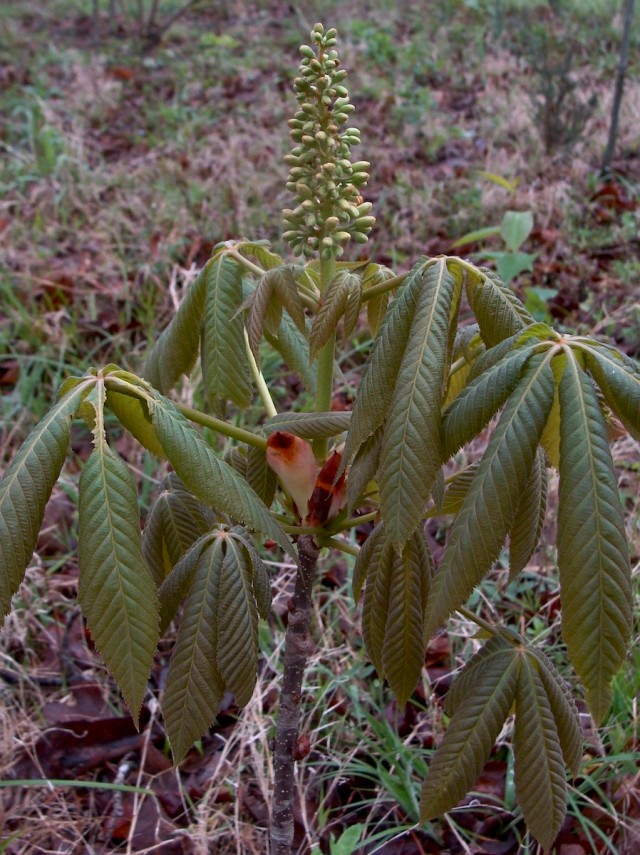 Photo 3: This plant, only several years old, produced its first inflorescence. Note enlarged reddish bud scales about to fall off and (on the trunk) leaf scars, undeveloped buds and lenticels.
Photo 3: This plant, only several years old, produced its first inflorescence. Note enlarged reddish bud scales about to fall off and (on the trunk) leaf scars, undeveloped buds and lenticels.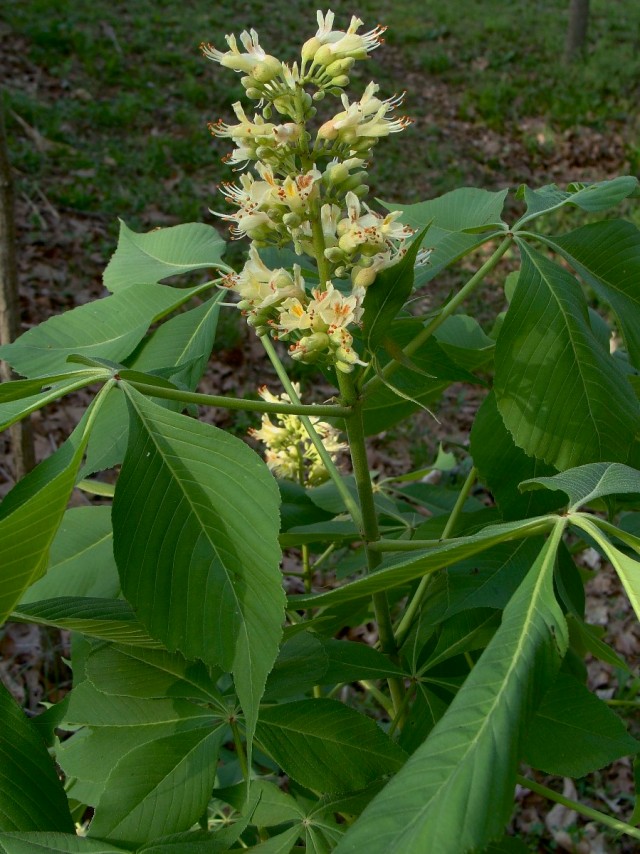 Photo 4: Opposite leaves typically have five leaflets with pinnate venation and crenulated margins. Note axillary leaf buds for next years’ growth.
Photo 4: Opposite leaves typically have five leaflets with pinnate venation and crenulated margins. Note axillary leaf buds for next years’ growth. Photo 5: Flowers that are positioned along the upper sides of the clusters. Pistil of a flower is exserted before flower’s stamens appear, as seen at lower left.
Photo 5: Flowers that are positioned along the upper sides of the clusters. Pistil of a flower is exserted before flower’s stamens appear, as seen at lower left. Photo 6: Fertilized ovaries develop into fruit with long, weak spines. Typically, only a few fruits per panicle will reach maturity. Photo in mid-April.
Photo 6: Fertilized ovaries develop into fruit with long, weak spines. Typically, only a few fruits per panicle will reach maturity. Photo in mid-April.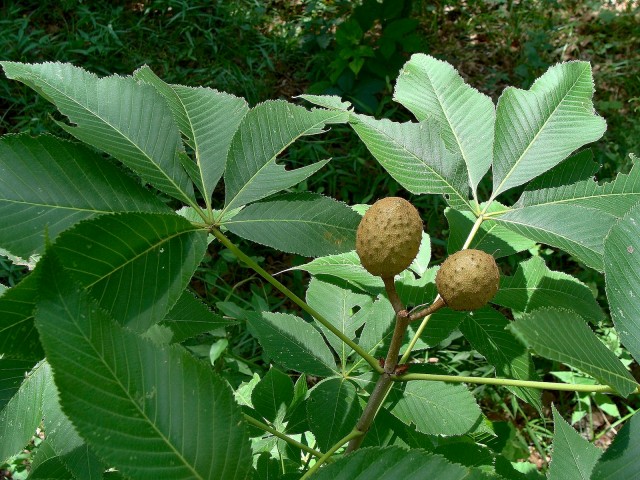 Photo 7: Upper portion of panicle beyond developing fruit has dropped off in this mid-July photo. Note two opposite brown buds at base of panicle’s peduncle (for next year’s growth).
Photo 7: Upper portion of panicle beyond developing fruit has dropped off in this mid-July photo. Note two opposite brown buds at base of panicle’s peduncle (for next year’s growth). Photo 1: Rhizome segment at coin is decaying after producing a flower stalk marked with a red asterisk. Lateral roots grew from either side of dead segment. Taproot is below coin.
Photo 1: Rhizome segment at coin is decaying after producing a flower stalk marked with a red asterisk. Lateral roots grew from either side of dead segment. Taproot is below coin. Photo 2: Long, radiating leaves are thin and pliable with a flexible point. Photo taken in late February.
Photo 2: Long, radiating leaves are thin and pliable with a flexible point. Photo taken in late February.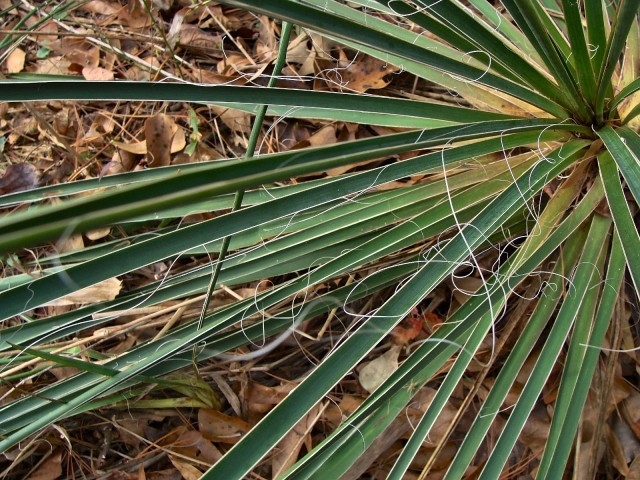 Photo 3: Curly marginal hairs are not twisted as on some other species. Appreciable stems do not develop as leaf rosettes add new central leaves from year to year.
Photo 3: Curly marginal hairs are not twisted as on some other species. Appreciable stems do not develop as leaf rosettes add new central leaves from year to year.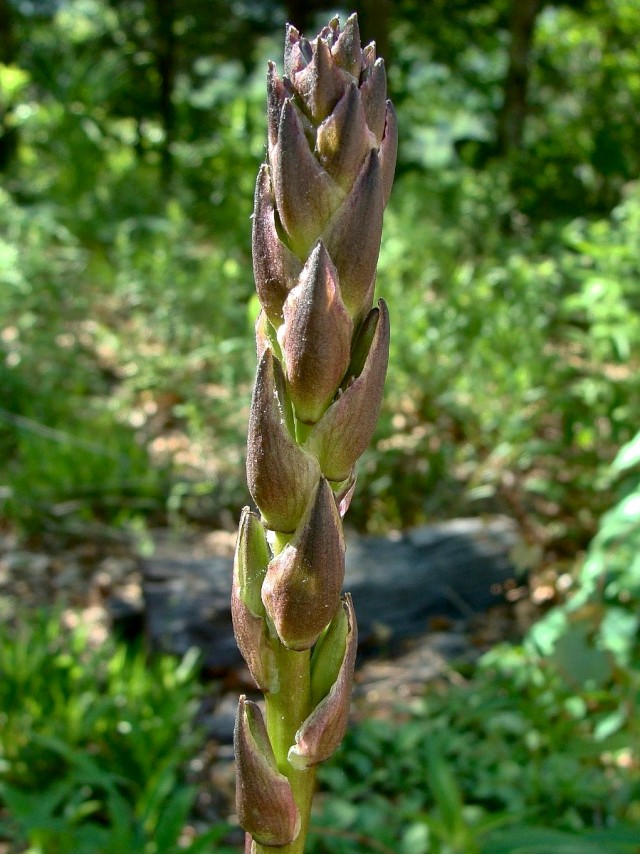 Photo 4: In this early May photo, purplish bracts on elongating flower stalk subtend and cover developing flower buds. Bracts are relatively short, as compared to other species.
Photo 4: In this early May photo, purplish bracts on elongating flower stalk subtend and cover developing flower buds. Bracts are relatively short, as compared to other species. Photo 5: Flowers, on short pedicels and peduncles, occur in a raceme-type inflorescence. Bracts on the lower portion of the stalk do not dry while flowers are in bloom. Site shown is mostly shady with loam soil.
Photo 5: Flowers, on short pedicels and peduncles, occur in a raceme-type inflorescence. Bracts on the lower portion of the stalk do not dry while flowers are in bloom. Site shown is mostly shady with loam soil.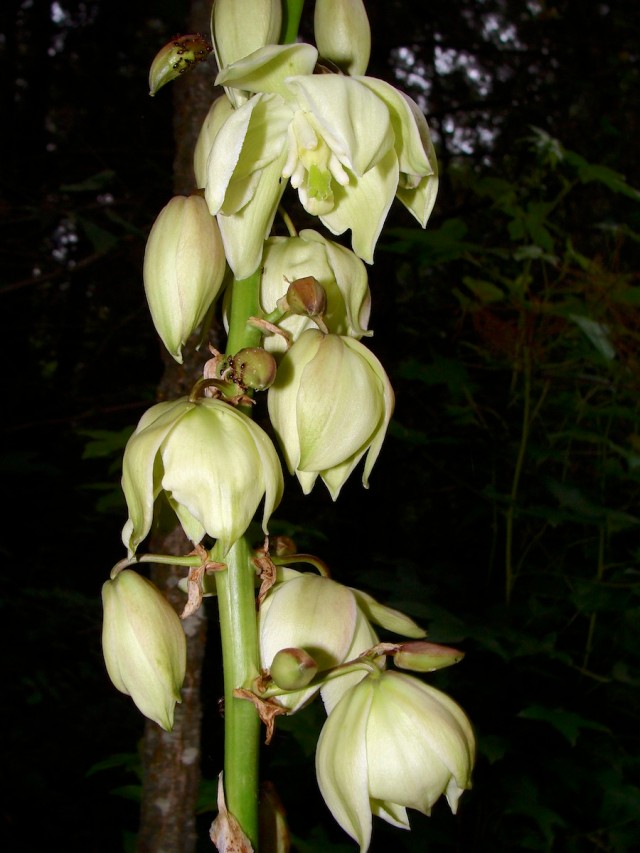 Photo 6: Heavy flowers cause pedicels to bend down. As seed capsules develop, strengthened pedicels bend upward.
Photo 6: Heavy flowers cause pedicels to bend down. As seed capsules develop, strengthened pedicels bend upward. Photo 7: The lobed green style sits above a large ovary that is surrounded by post-like filaments and thick tepals. Honey ants can be seen feeding on flower bud resin.
Photo 7: The lobed green style sits above a large ovary that is surrounded by post-like filaments and thick tepals. Honey ants can be seen feeding on flower bud resin. Photo 1: Rootstock, as seen in this mid-January photo, bears green fronds which will decline when new fronds appear in late winter . Previous year’s stipes remain. Fibrous roots have been removed.
Photo 1: Rootstock, as seen in this mid-January photo, bears green fronds which will decline when new fronds appear in late winter . Previous year’s stipes remain. Fibrous roots have been removed.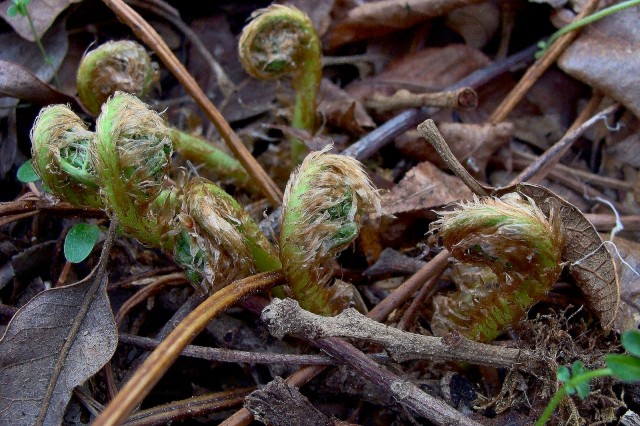 Photo 2: In early April, fiddleheads grow from center of rootstock. Previous year’s and older stipes can be seen.
Photo 2: In early April, fiddleheads grow from center of rootstock. Previous year’s and older stipes can be seen.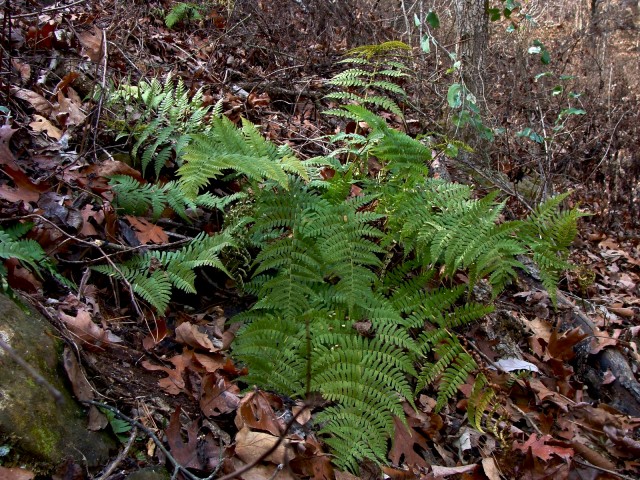 Photo 3: In early January, fronds remain green. All fronds of a plant grow from center of rootstock without any off-sets.
Photo 3: In early January, fronds remain green. All fronds of a plant grow from center of rootstock without any off-sets. Photo 4: Upper surfaces of an infertile frond (left) and a fertile frond (right) appear the same. Lower side of a fertile frond, which has already dispersed its spores, is shown in the middle. As shown, pinnae may be opposite or alternate. Photo taken in mid-July.
Photo 4: Upper surfaces of an infertile frond (left) and a fertile frond (right) appear the same. Lower side of a fertile frond, which has already dispersed its spores, is shown in the middle. As shown, pinnae may be opposite or alternate. Photo taken in mid-July.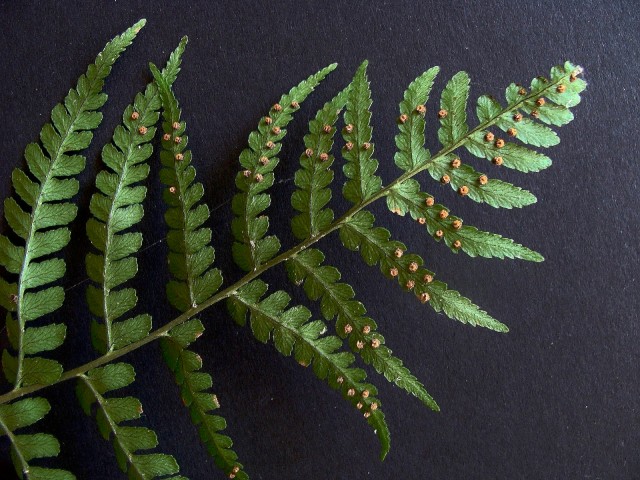 Photo 5: Sori are located at margins of pinnules or singly at sinuses between lobe-like pinnules, as shown. Note venation and slightly crenulate margins. Photo taken in mid-July.
Photo 5: Sori are located at margins of pinnules or singly at sinuses between lobe-like pinnules, as shown. Note venation and slightly crenulate margins. Photo taken in mid-July.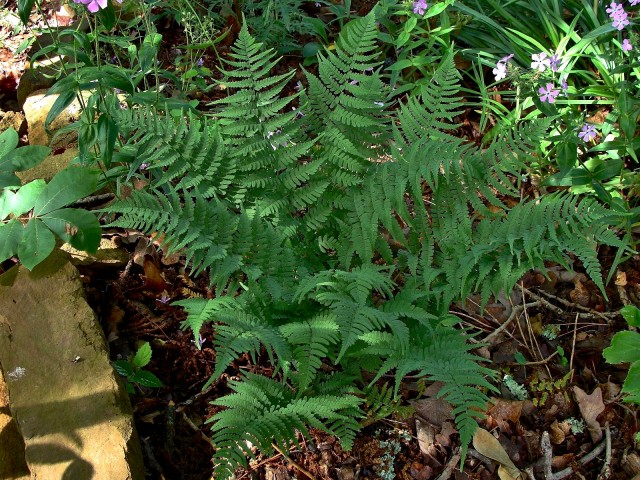 Photo 6: Marginal wood fern is an excellent accent plant for a shady garden.
Photo 6: Marginal wood fern is an excellent accent plant for a shady garden. Photo 1: Roots may grow from near leaf nodes or elsewhere from the underside of stems.
Photo 1: Roots may grow from near leaf nodes or elsewhere from the underside of stems.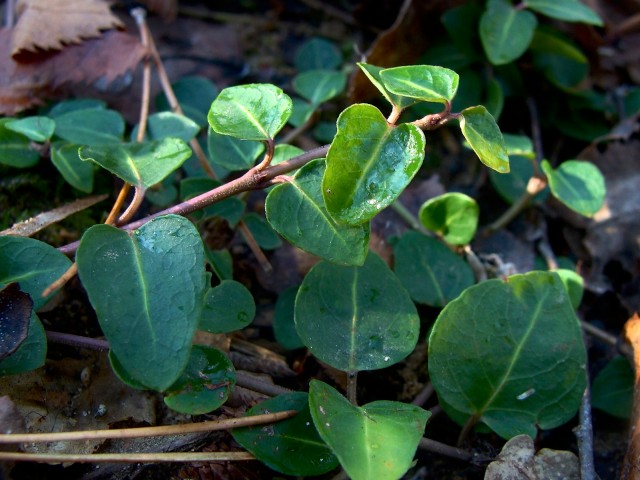 Photo 2: Current-year stem growth shown across upper-center of photo. Angle of petioles changes to orient leaves to sunlight. Note pale midribs of leaves.
Photo 2: Current-year stem growth shown across upper-center of photo. Angle of petioles changes to orient leaves to sunlight. Note pale midribs of leaves. Photo 3: With several years of growth, older stems become covered by newer stem growth and leaf litter. Largest leaves are at base of current season’s growth.
Photo 3: With several years of growth, older stems become covered by newer stem growth and leaf litter. Largest leaves are at base of current season’s growth. Photo 4: In this early May photo, flower buds are shown at the top of photo and several flower pairs and calyx pairs are shown lower in photo.
Photo 4: In this early May photo, flower buds are shown at the top of photo and several flower pairs and calyx pairs are shown lower in photo.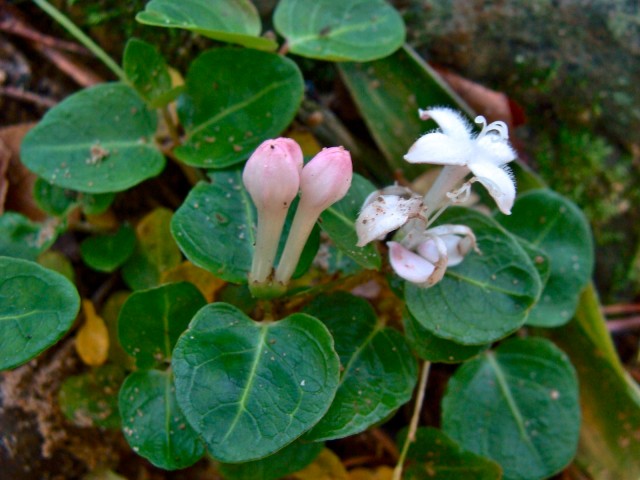 Photo 5: In this mid-May photo, flower buds are seen along with an open corolla that shows the pin morph of dimorphisim. Note arcuate leaf venation and calyx bearing two corollas.
Photo 5: In this mid-May photo, flower buds are seen along with an open corolla that shows the pin morph of dimorphisim. Note arcuate leaf venation and calyx bearing two corollas. Photo 6: In this early December photo, this partridgeberry was growing among moss and lichens near pine trees. Perianth scars remain evident along with calyx remnants, especially in the upper fruit. Inset shows fruit’s interior and stones.
Photo 6: In this early December photo, this partridgeberry was growing among moss and lichens near pine trees. Perianth scars remain evident along with calyx remnants, especially in the upper fruit. Inset shows fruit’s interior and stones. Photo 1: This dittany plant, shown in late March, bears heart-shaped leaves and has pubescent stems, lower leaf surfaces and leaf margins.
Photo 1: This dittany plant, shown in late March, bears heart-shaped leaves and has pubescent stems, lower leaf surfaces and leaf margins. Photo 2: A lanky plant in bloom in a sunny rocky site. Photo taken in late September.
Photo 2: A lanky plant in bloom in a sunny rocky site. Photo taken in late September. Photo 3: Flowers have four rounded lobes, strongly exserted stamens and pistils and exterior pubescence.
Photo 3: Flowers have four rounded lobes, strongly exserted stamens and pistils and exterior pubescence. Photo 4: In late November, floral tubes having fallen off and calyxes are accented by white hairs.
Photo 4: In late November, floral tubes having fallen off and calyxes are accented by white hairs. Photo 5: Display shows a cluster of cymes along with a separated 1/8-inch-long calyx and nutlets. Note villous hairs extending out of calyxes.
Photo 5: Display shows a cluster of cymes along with a separated 1/8-inch-long calyx and nutlets. Note villous hairs extending out of calyxes.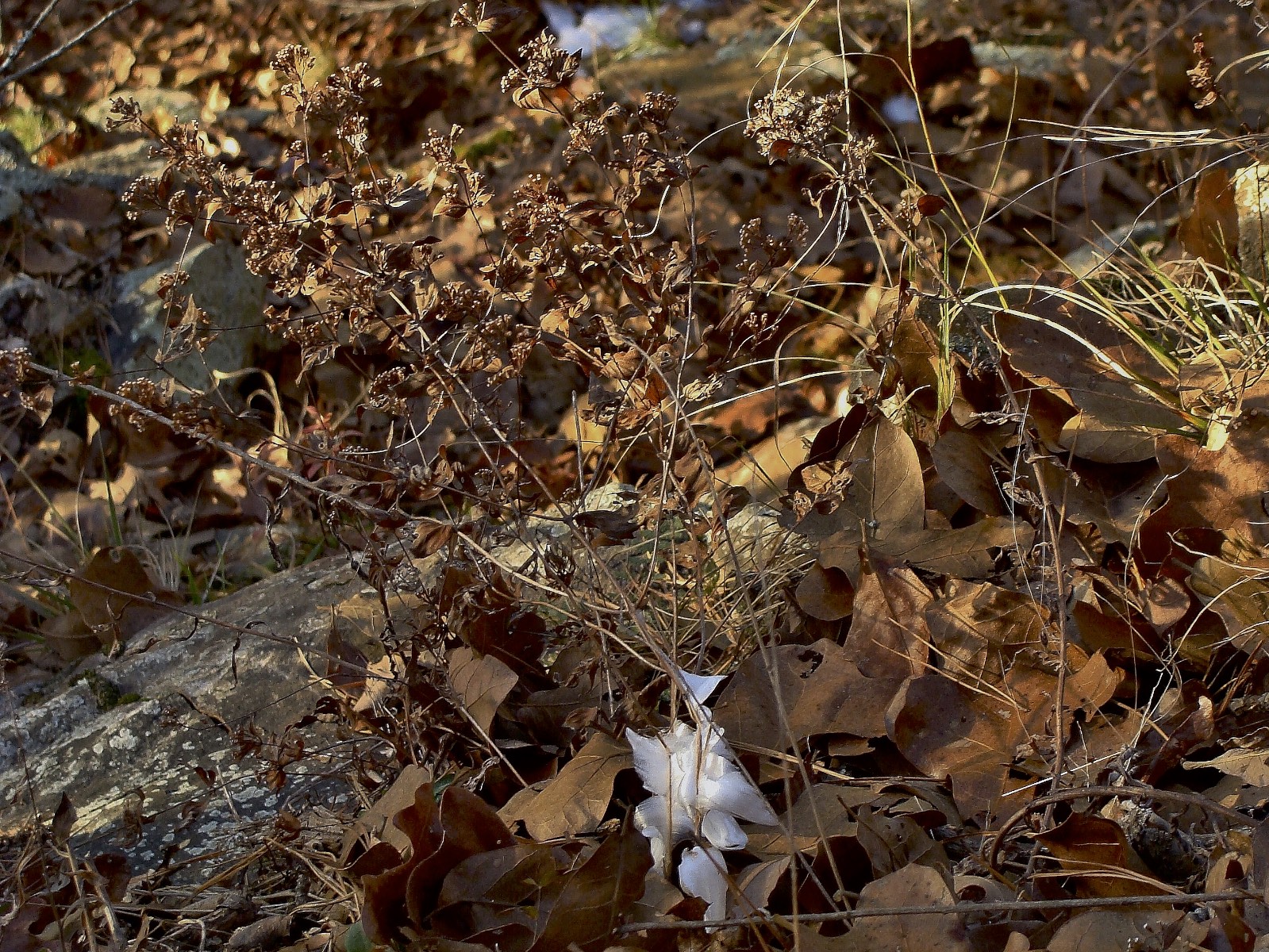 Photo 6: A dittany plant with frost flowers in late December. Frost flowers may be “regrown” from an individual stem on successive cold nights.
Photo 6: A dittany plant with frost flowers in late December. Frost flowers may be “regrown” from an individual stem on successive cold nights.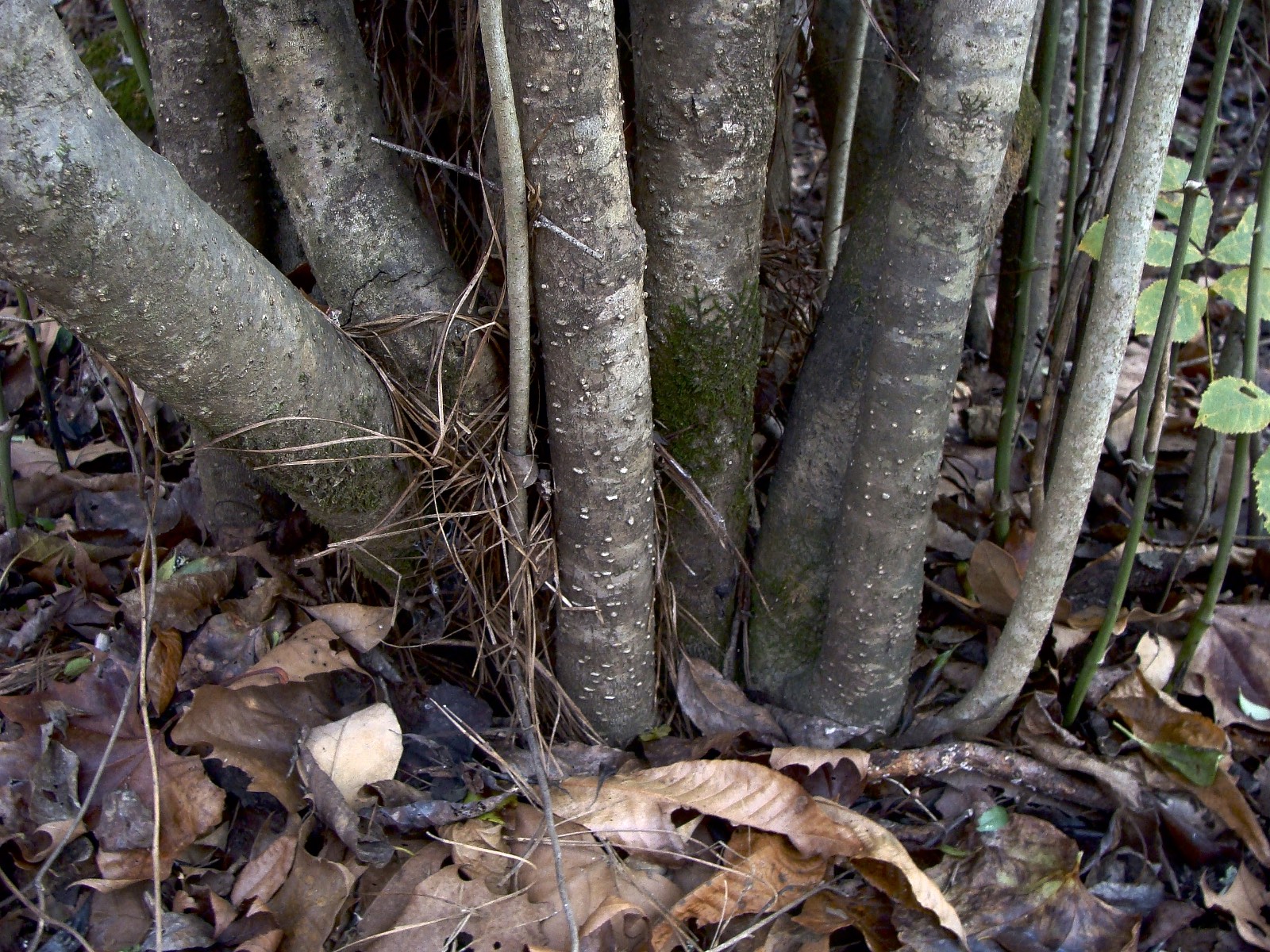 Photo 1: From year to year, stems multiply and become crowded. Note lenticels (prominent white corky dots). Green stems on right are a greenbrier (Smilax sp.).
Photo 1: From year to year, stems multiply and become crowded. Note lenticels (prominent white corky dots). Green stems on right are a greenbrier (Smilax sp.). 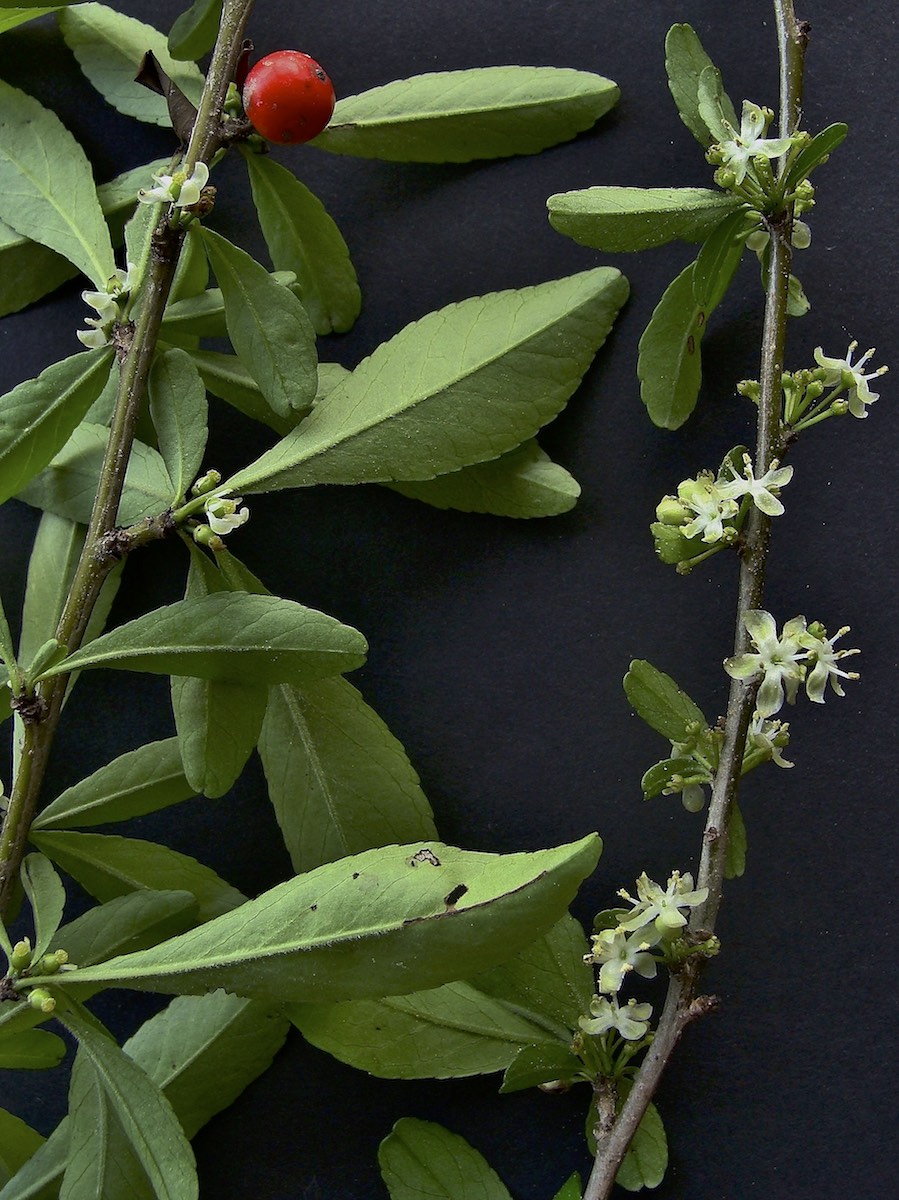 Photo 2: This mid-April photo shows twigs bearing female (left; note also fruit still remaining from previous season) and male (right) flowers. These male flowers have five petals, which is not typical (usually there are four). Spur shoots lengthen a minute amount each year as flowers and leaves grow from the tips. Note midrib pubescence of leaves on left.
Photo 2: This mid-April photo shows twigs bearing female (left; note also fruit still remaining from previous season) and male (right) flowers. These male flowers have five petals, which is not typical (usually there are four). Spur shoots lengthen a minute amount each year as flowers and leaves grow from the tips. Note midrib pubescence of leaves on left. Photo 3: This third-year twig is developing greyish bark and spur shoots. Flowers have pedicels which grow directly from spur tips. Pistillate flowers may have infertile stamens, as shown (see arrows). Fruit sometimes remains on plant into following growing season.
Photo 3: This third-year twig is developing greyish bark and spur shoots. Flowers have pedicels which grow directly from spur tips. Pistillate flowers may have infertile stamens, as shown (see arrows). Fruit sometimes remains on plant into following growing season.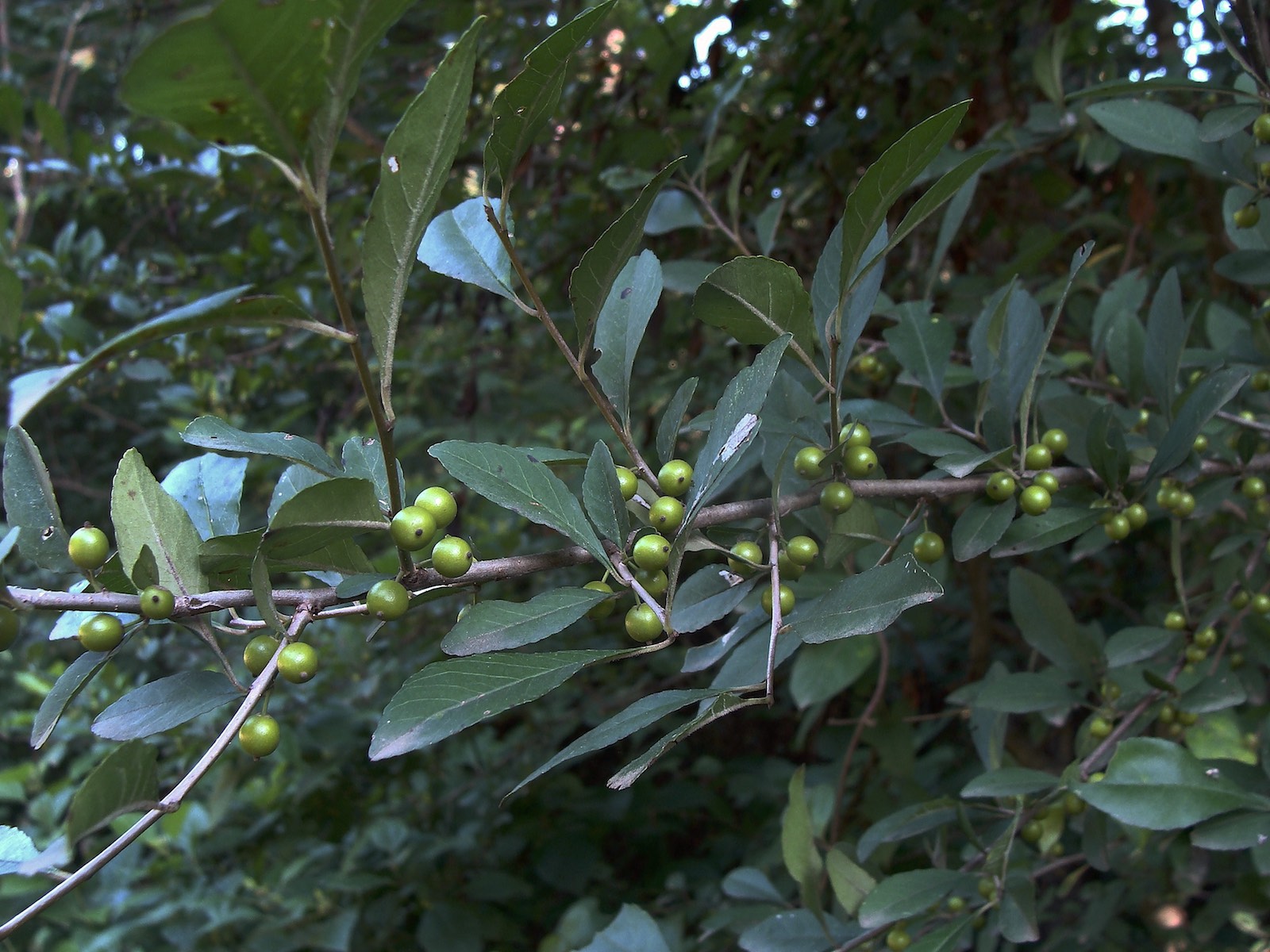 Photo 4: With sufficient sunlight on individual branches, fast growing current-year twigs may bear fruit on their lower portion. Photo taken in the mid-July.
Photo 4: With sufficient sunlight on individual branches, fast growing current-year twigs may bear fruit on their lower portion. Photo taken in the mid-July.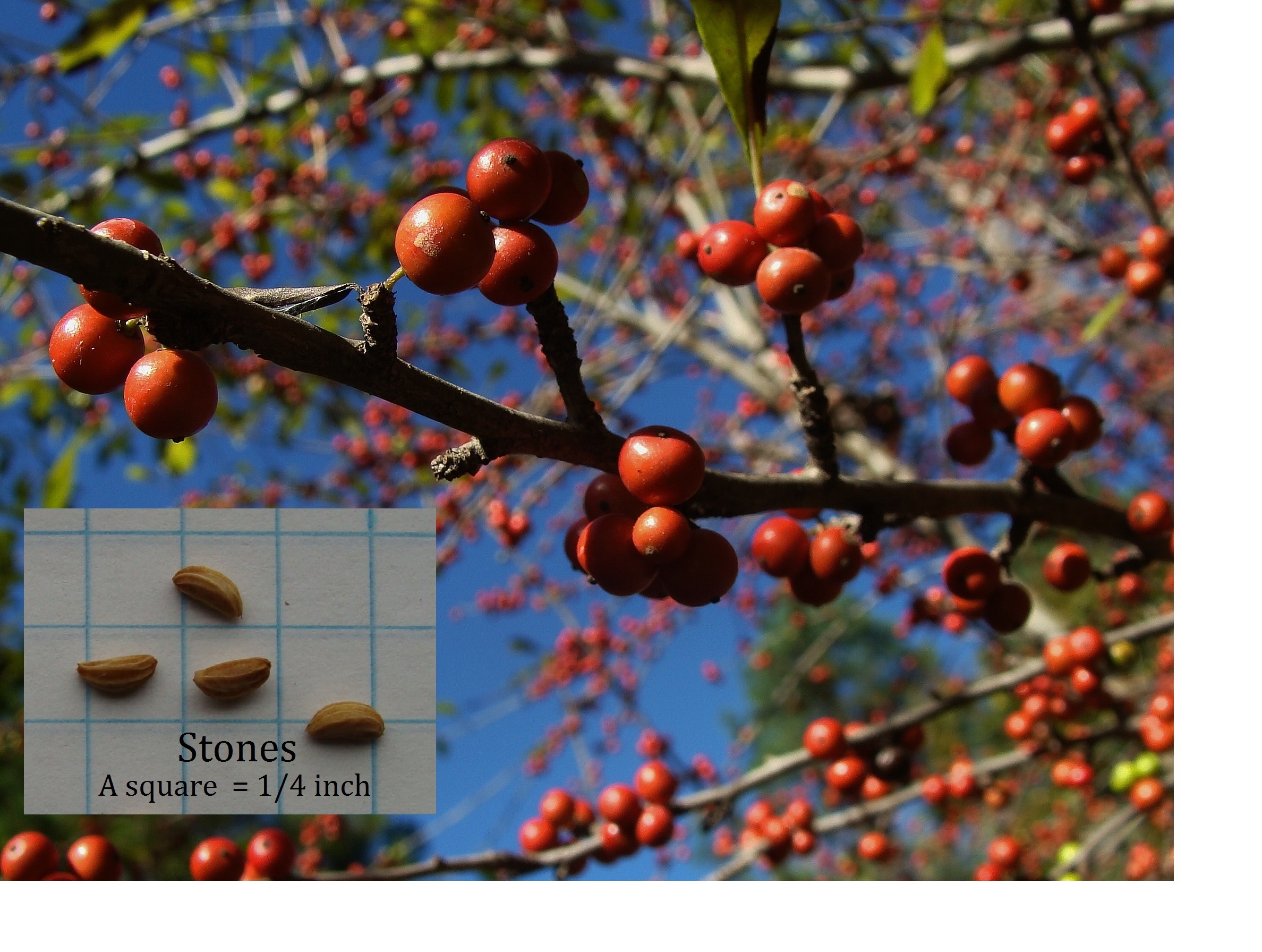 Photo 5: In this mid-October photo, fruit are becoming red. Note texture of very slow growing spurs roughened by leaf and pedicel scars. Inset shows ridged, 1-seeded stones..
Photo 5: In this mid-October photo, fruit are becoming red. Note texture of very slow growing spurs roughened by leaf and pedicel scars. Inset shows ridged, 1-seeded stones..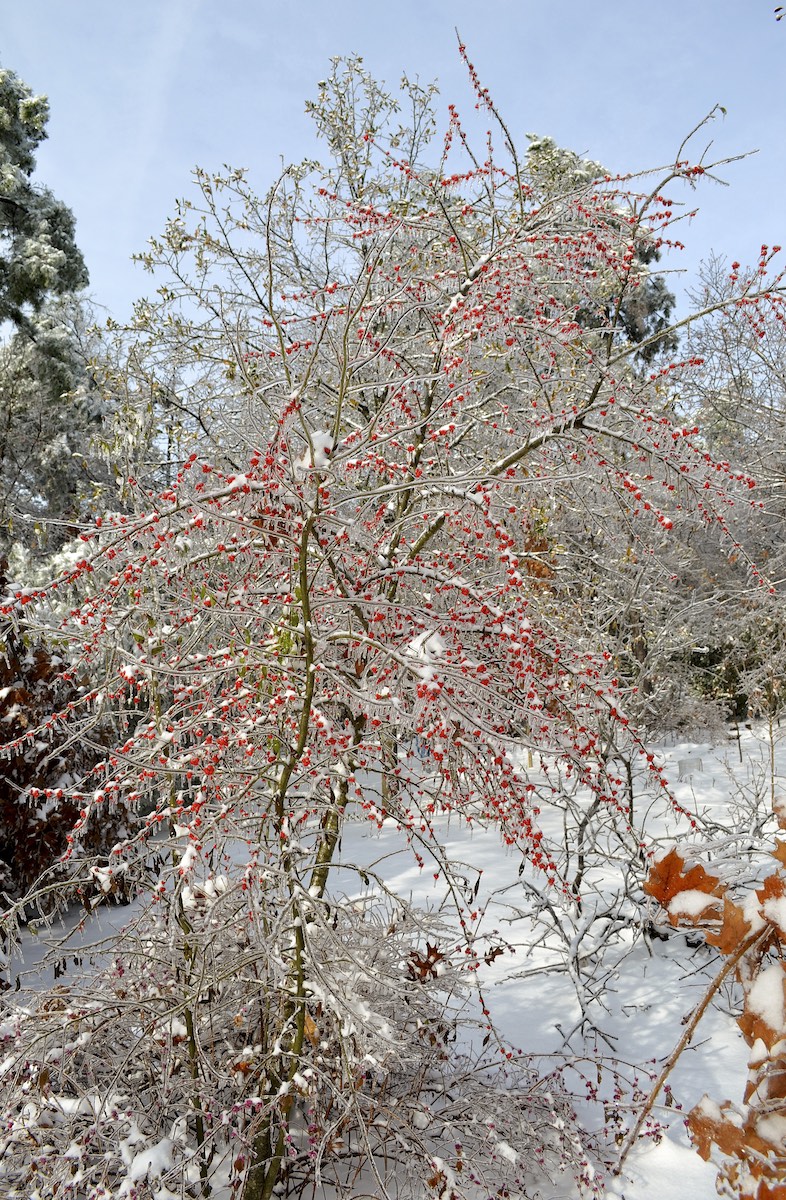 Photo 6: Possumhaw’s fruit is further enhanced by snow and ice. Fruit-bearing shrub at base is corral berry (
Photo 6: Possumhaw’s fruit is further enhanced by snow and ice. Fruit-bearing shrub at base is corral berry (